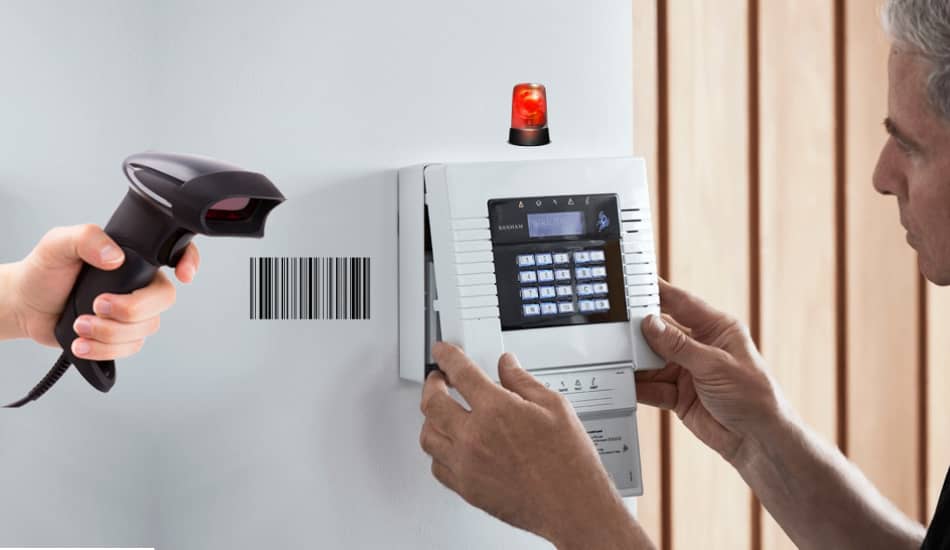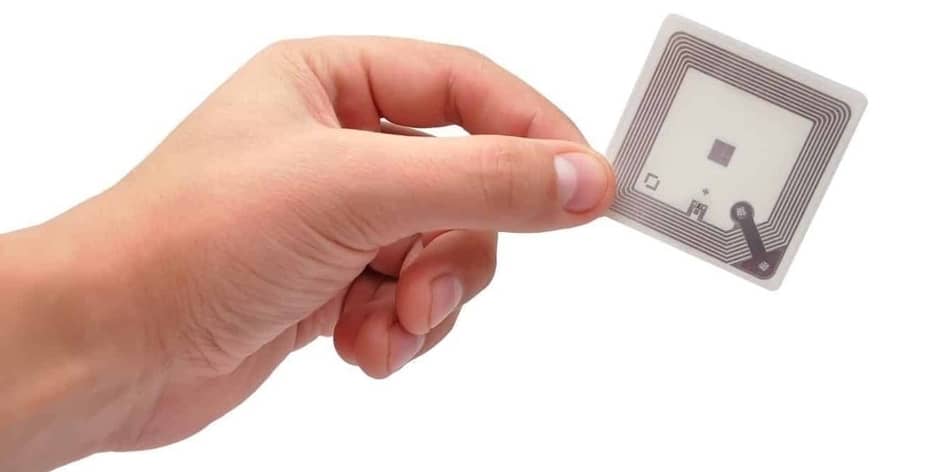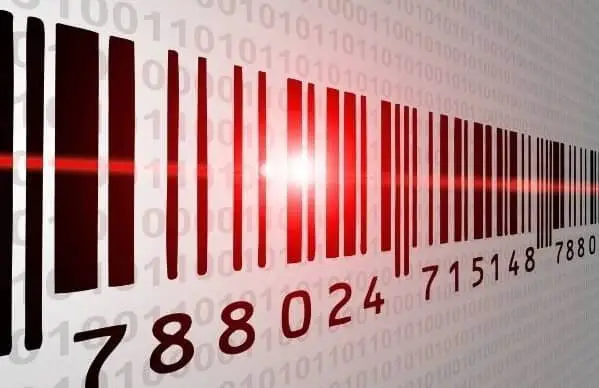Do Barcodes Set Off Alarms? Expert Explain

When you buy a product in a store, you will most likely encounter the barcode on the product. They are set there for a reason. Just a small moment of inattention is enough to make a valuable item disappear from your store. Today, thieves target small and cheap products that are in stores. These barcodes use special technology and are a key part of large supermarkets. In this article, we’ll talk about barcodes and how they work. So, let’s start!
So Do Barcodes Set Off Alarms? No, barcodes don’t set off alarms! Barcodes are product identifiers placed on the back of items and have a series of white and black lines whose function is to give the seller all the necessary information about the product. RFID tags are what sets off alarms.
If there were no barcodes on the products, retailers would not be able to read the price of the product with the help of scanners which are now an integral part of every cash register. However, stores also have RFID tags and they are set there to protect products from thieves.
What Are RFID Tags?

But what are RFID tags and what they are for? RFID tags are invisible labels attached to items in the store, and their function is to activate the alarm located at the exit if the retailer has not deactivated them after the product has been paid for. If a thief tries to steal an item with an RFID tag on the output, beeps will be heard. You have already surly heard them in such situations in stores.
Today, retailers in standard stores struggle to survive in the e-commerce sector, but unfortunately, they also struggle with thieves. There are several methods to protect goods in stores from theft. Effective protection of the salesroom begins with thoughtful shop design.
How Do Sensors Detect Barcodes?
So, what exactly does a barcode scanner read? Using sensors and a light source, barcode scanners measure and detect the light intensity reflected from the white spaces inside a unique pattern made from parallel bars. Keep in mind that different barcode scanner types are synchronized with different applications.
Does Aluminum Foil Block Security Sensors?

Aluminum foils prevent activating the system that is designed for this task if the barcode is covered with aluminum foil. This is why shoplifters often try to hide stolen goods in bags that are boosted with aluminum foil. But even in such cases, they can be caught.
What Are The Best Way to Reduce Losses From Shoplifting?
Traders meet thieves every day, especially in self-service stores. This is a problem that is present everywhere in the world, regardless of the economic prosperity of a particular country, including the United States. Therefore, the problem of theft requires special attention and a smart approach to reduce the number of thefts in stores.
Research shows that losses caused by theft, done by staff and customers, in big stores range from $30,000 to $50,000 annually! In small and medium-sized stores, that damage is appraised between $15,000 and $28,000. According to other estimates, just losses from theft in supermarkets are from 0.5 to 2% of turnover.
Global statistics confirm this. However, in a few stores, this loss indicator for theft goes up to between 10% to 12% of turnover. Compared to 1999, it is an increase of a stunning 79%.
If you had a power outage in your home, be sure to read How To Reset Your ADT Alarm After Power Outage?

People are divided into 3 groups according to experts:
- The first category represents 10% of people who will never commit a crime.
- The second category represents 10% of people who will commit a crime no matter whether or not they will be caught.
- The third category, which represents 80% of people, is the one that will commit a crime if the opportunity represents where they will not be caught.
Looking at this statistic, the conclusion is that the most attention should be paid to the third category. These people can be effectively influenced by the very presence of guards in the store. This measure will also be effective when the guards take care of the goods in the store to prevent people from the third category from becoming thieves.
To reduce the number of thefts in their stores, some chains of self-service stores sacrifice earnings by limiting entry to the store only to customers who have customer cards. That gives them a lever with the help of which they can easily ban the entry of people who are noticed to be prone to theft or put them on a kind of blacklist.
Stores that have introduced this practice report that their theft losses have been, in some cases, reduced by as much as 50%, which is a big improvement as opposed to the losses in stores that receive all customers.
Experts advise retailers who want to reduce the losses caused by thefts committed by customers to use effective technological methods, and among them, number one is the use of barcodes.
Do Barcodes Set off Alarms?

No, barcodes don’t set off alarms! RFID tags set off alarms. Given that theft accounts for as much as 25% of losses in stores, it is not surprising that retailers are constantly thinking about how to secure their goods. This information is not surprising, especially when it comes to shops that sell small items or things that are easy to hide, such as jewelry or clothing.
Security systems in stores alone cannot be as effective as anti-theft barcode adhesive labels placed on products. They work by activating alarms if unpaid goods are tried to be taken out of the store through doors with sensors.
Barcode labels are coated papers, and their look reminiscent of ordinary product labels. There are usually two types of labels in circulation:
- Metal-plated barcodes: When a thief is passing through the alarm, a specific frequency emits.
- Barcodes On batteries: These are labels that are most used. They are consisting of a micro-sized battery and a small antenna that has two frequencies (AM and RF) inside. They usually emit a magnetic frequency to the receiver built into the store’s exit and trigger the alarm. They are very small, so unnoticeable. If the thief does not remove this security tag, an alarm can easily detect stilling.
The barcode labels are glued to the product’s surface with the help of an adhesive. In order for the customer who paid for the product to be able to leave the store without the alarm being activated, the cashier must demagnetize the label.
To sum up the whole story, anti-theft barcode adhesive labels contain magnetic reading bars and glue with which they are attached to products. Reading bars are also stored in the control panel of the system, which can then easily recognize if you have a product in the bag from which the magnetic protection has not been removed. When this is the case, the sensor on the exit door will recognize the stolen product, and an alarm will turn on.
Here is a great Youtube video that explains this even more:
Advantages of the Barcode Alarms
In the commercial world today, barcode anti-theft alarms are a common occurrence. The reason for this is the large number of possibilities that this technology provides. Here are some of them:
1. Inhibitory Factor
When you have barcode anti-theft alarms in the store, their very presence ensures a certain degree of protection of the store from theft, even before the system is activated in a particular case. A built-in security system tells potential thieves that your store is safe and that you want to stop possible business losses. For a large number of them, that will be enough not even to try to steal something.
2. Consumers Will Save Time At Checkout
A barcode anti-thief alarm after they first appeared in stores for customers meant less waiting at the checkout. This increased frequency of customers, which retailers adored because of increased sales. However, this also had a good effect on customers because when products are sold in large quantities, their price becomes lower.
Anti-thief barcode alarms are of the greatest use in supermarkets that offer customers a wide range of products. Because of this, some small shop owners initially thought they did not need to install such an anti-thief system. First of all, they thought that such a system was not profitable for them.
Such an attitude of small retailers caused a real boom when shopping in supermarkets. Customers were happy to come to the supermarket because the barcodes allowed them to get through the checkout quickly. In addition, barcodes ensure that the process of paying for the purchased goods passes without problems or errors.
3. Effective Data Collection
The barcode’s main task is to secure the store from thieves. It is a technology that can literally prevent a person from stealing something. A great addition is that the retailer can track customers with the help of barcode technology. When the security system, with the help of the EAS antenna, escorts the customer out of the store, it records his movement. In this way, data on store attendance can be obtained.
No matter what level of sales you are in, barcode protection is the best form of effective merchandise management in a store.
If you want to approach your business in this way, the barcode is a good solution. Keep in mind that with the help of the barcode system, you will be able to track very accurately and automatically all items in your store.
If you want to learn more about Smart Glass, be sure to read How Does Smart (Switchable) Glass Work?
FAQ: People Also Ask
What Makes Store Alarms Go Off?
Alarms in stores are activated after the security system recognizes that a person is trying to get out with a product that still has an anti-theft barcode or with a barcode that has not been scanned.
Can Price Tags Set off Alarms?
The answer to this question is – No. A barcode tag whose sole purpose is charging the products cannot trigger an in-store alarm. But RFID tags are often positioned near barcodes, and they can trigger an alarm.
How do Stores Detect Shoplifting?
Stores usually detect stealing with the help of a barcode anti-theft alarm. Surely you have at least once found yourself in a situation where your cheeks turn red after the alarm in the store sounded because of you.
It is easy to mark the goods from the store with the help of the device in order to prevent theft. Once an item is marked that way, it is hard to steal it. Such markers react with the help of sensors in which there is a circuit and an antenna, usually between bars that are placed at the exit of the store.
As the sensors receive electromagnetic waves when the thief tries to pass the bars at the exit of the store, they recognize the product that was potentially stolen, and the alarm goes off.
Some sensors are tiny, and their circuit contains high-frequency waves, approximately 8 MHz. These sensors can only be deactivated at the checkout using the special equipment that is connected with the barcode reader during customer payment.
What do Store Sensors Detect?
Store sensors detect the situation in which a person is trying to illegally take an item from the store.
Final Thoughts
Many shop owners often wonder how to protect their businesses from theft. Some of them often encounter so-called merchandise thefts, so they try to ensure control over the goods in stock as much as possible. The best solution for such needs is a barcode anti-theft alarm system that is specially designed for this purpose.
It is a useful piece of equipment that effectively prevents theft in any facility where goods are possibly stolen. It is also good to know that the barcode anti-theft alarm system allows the trader to expose his goods without locking them in special cabinets.

